March 11, 1829 – Kentucky Salt Well Driller discovers Oil –
Boring for brine with a simple spring-pole method on a farm near Burkesville, Kentucky, Martin Beatty found oil at a depth of 171 feet. Disappointed, he searched elsewhere. Beatty drilled brine wells to meet demand from Kentucky settlers who needed salt to help preserve food. He bored his wells by percussion drilling, raising and dropping a chisel suspended from a sapling, an ancient drilling technology.
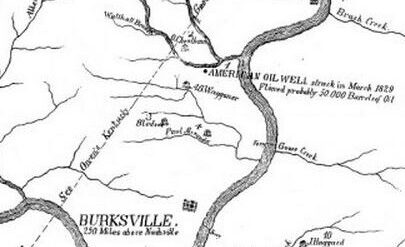
The 1829 “American Oil Well” of Burksville, Kentucky, drilled to find brine, produced oil later bottled and sold as medicine.
Historian Sheldon Baugh described the scene of Beatty’s 1829 oil discovery: “On that day, well-driller Beatty bragged to bystanders, ‘Today I’ll drill her into salt or else to Hell.’ When the gusher erupted he apparently thought he’d succeeded in hitting Hell. As the story goes, he ran off into the hills and didn’t come back.”
Beatty’s discovery would be neglected for years — until oil from his well was sent to Pittsburgh, where Samuel Kier bottled and sold it as medicine. Kier also would build the earliest refineries for turning oil into kerosene for lamps.
Learn more in Kentucky’s Great American Oil Well.
March 11, 1930 – Society of Exploration Geophysicists founded
The Society of Exploration Geophysicists (SEG) was founded by 30 men and women in Houston as the Society of Economic Geophysicists, to foster “the expert and ethical practice of geophysics in the exploration and development of natural resources.”

The society began publishing its journal Geophysics in 1936, and in 1958 formed a scholarship trust for students of geophysics. In 2021, SEG and the American Association of Petroleum Geologists (AAPG) combined annual meetings to create the International Meeting for Applied Geoscience & Energy (IMAGE), which in 2023 attracted 7,329 global attendees.
March 12, 1912 – Thomas Slick discovers First of Many Oilfields
Once known as “Dry Hole Slick,” Thomas B. Slick discovered a giant oilfield midway between Oklahoma City and Tulsa. His No. 1 Wheeler uncovered the Drumright-Cushing field, which produced for the next 35 years, reaching 330,000 barrels of oil a day at its peak. Knowing speculators would descend on the area when word got out, Slick secretly hired all of the local livery rigs.

Tom Slick is among those honored at the Conoco Oil Pioneers plaza at the Sam Noble Museum, University of Oklahoma, Norman.
After his success in Cushing, Slick began an 18-year streak of discovering some of America’s most prolific fields in Oklahoma, Kansas, and Texas. His discoveries during the Greater Seminole Oil Boom of the 1920s made him the leading independent producer in the United States with a net worth up to $100 million.
By 1930 in the Oklahoma City field alone, Slick completed 30 wells with the capacity to produce 200,000 barrels of oil a day. When he died suddenly the same year from a stroke at age 46, oil derricks in the Oklahoma City field stood silent for one hour in tribute to Slick.
Learn more in Oklahoma’s King of the Wildcatters.
March 12, 1914 – Last Coal Powered U.S. Battleship Commissioned
The USS Texas, the last American battleship built with coal-fired boilers, was commissioned. Coal-burning boilers, which produced dense smoke and created tons of ash, required the Navy to maintain coaling stations worldwide. Coaling ship was a major undertaking and early battleships carried about 2,000 tons with a crew of “coal passers.”
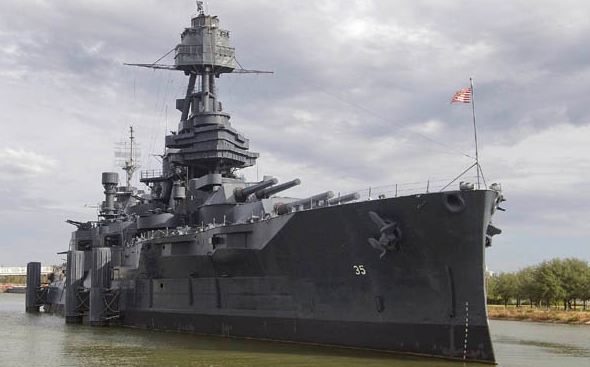
The USS Texas’ coal-powered boilers were converted to burn fuel oil in 1925. Photo courtesy Battleship Texas State Historic Site.
Dramatic improvement in efficiency came when the Navy began adopting fuel oil boilers. By 1916, the Navy had commissioned its first two capital ships with oil-fired boilers, the USS Nevada and the USS Oklahoma. To resupply them, “oilers” were designed to transfer fuel while at anchor, although underway replenishment was soon possible in fair seas.
The USS Texas was converted to burn fuel oil in 1925. The “Big T” — today the Battleship Texas State Historic Site docked on the Houston Ship Channel — was the first battleship declared to be a U.S. National Historic Landmark.
Learn more in Petroleum and Sea Power.
March 12, 1943 – WWII Roughnecks of Sherwood Forest
A top-secret team of 42 American drillers, derrickhands, roustabouts, and motormen boarded the troopship HMS Queen Elizabeth. They were volunteers from two Oklahoma companies, Noble Drilling and Fain-Porter Drilling. Their mission was to drill wells in England’s Sherwood Forest and help relieve the crisis caused by German submarines sinking Allied oil tankers. Four rotary drilling rigs were shipped on separate transport ships. One of the ships was sunk by a U-Boat.
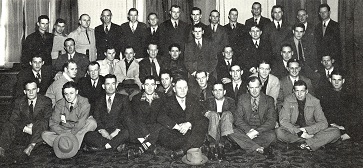
Volunteer roughnecks from two Oklahoma drilling companies embarked for England in March 1943. Derrickhand Herman Douthit would not return.
With the future of Great Britain depending on petroleum supplies, the Americans used Yankee ingenuity to drill an average of one well per week. Their secret work added vital oil to fuel the British war effort.
Learn more in Roughnecks of Sherwood Forest.
March 12, 1968 – Alaska’s Prudhoe Bay Oilfield Discovered
Two hundred and fifty miles north of the Arctic Circle, Alaska’s Prudhoe Bay oilfield was discovered by Richfield Oil (ARCO) and Humble Oil Company (Exxon). The Prudhoe Bay State No. 1 exploratory well arrived more than six decades after the first Alaska oil well. It followed Richfield Oil’s discovery of the Swanson River oilfield on the Kenai Peninsula in 1957.

Map courtesy Alaska Oil and Gas Conservation Commission. Photo from 1969 courtesy Atlantic Richfield Company.
At more than 213,000 acres, the Prudhoe Bay field was the largest oilfield in North America, surpassing the 140,000 acre East Texas oilfield discovery of 1930. Prudhoe Bay’s remote location prevented oil production beginning in earnest until 1977, after completion of the 800-mile Trans-Alaska Pipeline.
Prudhoe Bay field’s production exceeded an average rate of one million barrels of oil a day by March 1978, according to the Alaska Oil and Gas Conservation Commission. It peaked in January 1987 at more than 1.6 million barrels of oil per day.
March 13, 1974 – OPEC ends Oil Embargo
A five-month oil embargo against the United States was lifted by Arab members of the Organization of Petroleum Exporting Countries (OPEC), a cartel formed in 1960. The embargo, imposed in response to America supplying the Israeli military during the October 1973 Yom Kippur War, created gasoline shortages, prompting President Richard M. Nixon to propose voluntary rationing and a ban of gas sales on Sundays. OPEC ended the embargo after Secretary of State Henry Kissinger negotiated an Israeli troop withdrawal from parts of the Sinai.
March 14, 1910 – Lakeview No. 1 Well erupts in California
The Union Oil Company Lakeview No. 1 well erupted a geyser of oil at dawn in Kern County, California (some sources give the date as March 15). With limited technologies for managing the deep, highly pressured formation of the Midway-Sunset field, drillers had experienced several accidental oil spills, including the Shamrock gusher in 1896 and the 1909 Midway gusher.
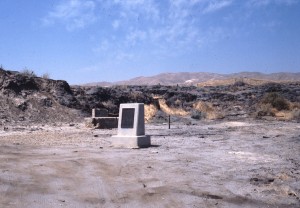
A marker and remnants of a sand berm north of Maricopa, California, mark the site of a 1910 Union Oil gusher that flowed uncontrolled for 18 months. Photo courtesy San Joaquin Valley Geology.
“But none of these wells came close to rivaling the Lakeview No. 1 which flowed, uncapped and untamed, at 18,000 barrels a day for 18 months,” noted a San Joaquin Valley geologist. Surrounded by berms and sandbags to contain the oil, the well collapsed and died in September 1911, after producing 9.4 million barrels of oil (about half was contained and sold).
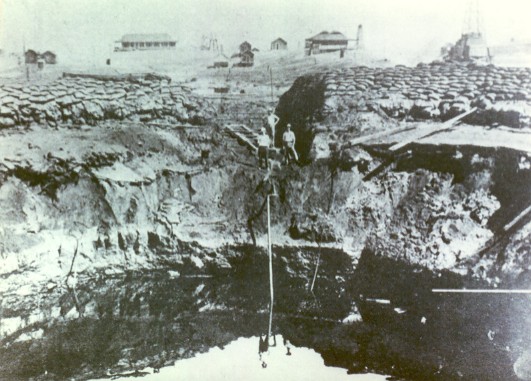
Oil erupted in California’s Midway-Sunset oilfield on March 14, 1910. Contained by sandbags by October, the Lakeview No. 1 well produced 9.4 million barrels during the 544 days it flowed. Photo courtesy San Joaquin Valley Geology.
The environmental impact of the Lakeview well, still the largest oil spill in U.S. history, was less destructive due to evaporation and levees of sandbags that prevented contamination of Buena Vista Lake. A Kern County historic marker was erected in 1952 at the site, seven miles north of the West Kern Oil Museum.
The ram-type blowout preventer to seal well pressure was invented in 1922.
March 15, 1946 – Texas Independents produce TIPRO
With Texas oilfield discoveries resulting in overproduction, declining prices, oilfield thefts, and conflicts with major oil companies, independent producers formed a trade association to lobby federal and state lawmakers. The Texas Independent Producers and Royalty Owners Association (TIPRO) was established “to preserve the ability to explore and produce oil and natural gas and to promote the general welfare of its members.”
March 15,1985 – Gulf Oil becomes Chevon
Gulf Oil Corporation, founded in 1907 by Andrew and William Mellon of Pittsburgh, Pennsylvania, merged with Socal, the Standard Oil Company of California (see First California Oil Well). The combined companies re-branded as Chevron in the United States, and the Hinduja Group acquired the Gulf name and products, creating Gulf Oil International, a lubricants company.
March 16, 1911 – Pegasus Trademark takes Flight
A Vacuum Oil Company subsidiary in Cape Town, South Africa, trademarked a flying horse logo inspired by Pegasus of Greek mythology. Based in Rochester, New York, Vacuum Oil had built a successful lubricants business long before gasoline was a branded product.
When Vacuum Oil and Standard Oil of New York (Socony) combined in 1931, the Socony-Vacuum Oil Company adopted the winged horse trademark and marketed Pegasus Spirits and Mobilegas products.
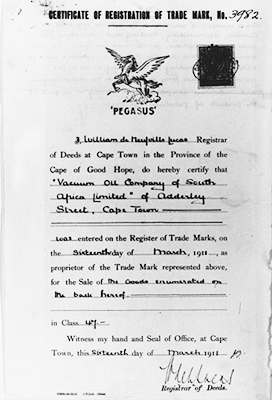
The original Mobil Pegasus logo was registered in 1911 by a South Africa subsidiary of New York-based Vacuum Oil Company.
A stylized red gargoyle earlier had advertised the company, which produced petroleum-based lubricants for carriages and steam engines. Created by the Vacuum Oil Company of South Africa, the Pegasus trademark proved to be a far more enduring image.
Learn more oil and gas history in Mobil’s High-Flying Trademark.
March 16, 1914 – “Main Street” Oil Well completed in Oklahoma
A well completed in 1914 produced oil from about 1,770 feet beneath Barnsdall, Oklahoma. The popular TV program Ripley’s Believe It or Not would proclaim the well the “World’s Only Main Street Oil Well.”
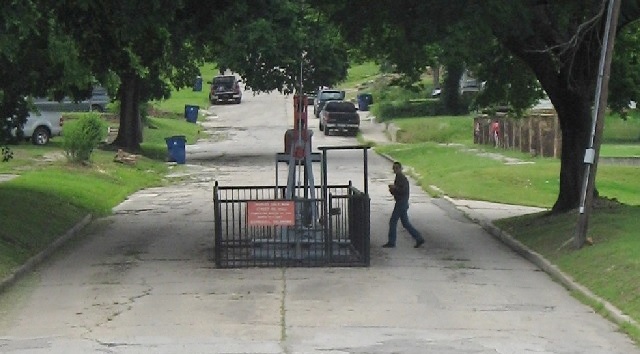
An oil well pump in the middle of Main Street in Barnsdall, Oklahoma, was visited by American Oil & Gas Historical Society volunteer Tim Wells in 2016. Photo by Bruce Wells.
The town originally was called Bigheart, named for Osage Chief James Bigheart, who on behalf of the Osage people in 1875 signed the first lease for oil and gas exploration, according to Osage County. In 1922, Barnsdall was renamed for Theodore Barnsdall, owner of the Barnsdall Refining Company, which later became part of Baker Hughes Company. The National Register of Historic Places added the Barnsdall Main Street oil well in 1997.
March 17, 1890 – Sun Oil Company founded
The Peoples Natural Gas Company, founded four years earlier by Joseph Pew and Edward Emerson to provide natural gas to Pittsburgh, expanded to become the Sun Oil Company of Ohio.

Sun Oil Company brands from 1894 to 1920 (top) to SONOCO from 1920 to 1954.
At the turn of the century, the company had acquired promising leases near Findlay and entered the business of “producing petroleum, rock and carbon oil, transporting and storing same, refining, purifying, manufacturing such oil and its various products.” Sun Oil marketed Sunoco Motor Oil beginning in the 1920s, and became an oilfield equipment supplier in 1929, forming Sperry-Sun.
March 17, 1923 – Oklahoma Discovery leads to Giant Oilfields
The Betsy Foster No. 1 well, a 2,800-barrel-a-day oil gusher near Wewoka, county seat of Seminole County, Oklahoma, launched the Seminole area boom. The discovery south of Oklahoma City was followed by others in Cromwell and Bethel (1924), and Earlsboro and Seminole (1926). Thirty-nine separate oilfields were be found at Seminole and Pottawatomie, Okfuskee, Hughes, and Pontotoc counties. Once among the poorest economic regions in Oklahoma, by 1935 the greater Seminole area became the largest supplier of oil in the world.
March 17, 1949 – First Commercial Application of Hydraulic Fracturing
A team from Halliburton and Stanolind companies converged on an oil well about 12 miles east of Duncan, Oklahoma, and performed the first commercial application of hydraulic fracturing.
A 1947 experimental well had fractured a natural gas field in Hugoton, Kansas, and proven the possibility of increased productivity. The technique was developed and patented by Stanolind (later known as Pan American Oil Company) and an exclusive license was issued to Halliburton Company to perform the process. Four years later, the license was extended to all qualified oilfield service companies.

The first commercial hydraulic fracturing job (above) took place in 1949 about 12 miles east of Duncan, Oklahoma. Photo courtesy Halliburton.
“Since that fateful day in 1949, hydraulic fracturing has done more to increase recoverable reserves than any other technique,” proclaimed a Halliburton company spokesman in 2009, adding that more than two million fracturing treatments have been pumped without polluting an aquifer.
Erle P. Halliburton had patented an efficient well cementing technology in 1921 that improved oil production while protecting the environment. The earliest attempts to increase petroleum production by fracturing geologic formations began in the 1860s.
Learn more in Shooters – A ‘Fracking’ History.
March 17, 1949 – “Diamond Glenn” opens Shamrock Hotel
Texas independent producer “Diamond Glenn” McCarthy hosted the grand opening of his $21 million, 18-story, 1,100-room Shamrock Hotel on the outskirts of Houston. McCarthy reportedly spent another $1 million for the hotel’s St. Patrick’s Day opening day gala, including arranging for a 16-car Santa Fe Super Chief train to bring friends from Hollywood.
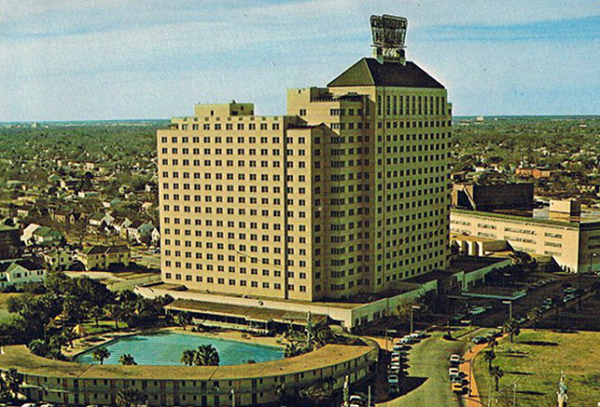
After paying $21 million to construct the Shamrock Hotel, Glenn McCarthy spent another $1 million for its grand opening on St. Patrick’ Day 1949. The 1,100-room Houston hotel was demolished in 1987.
The Texas wildcatter, who had discovered 11 oilfields by 1945, also introduced his own label of bourbon at Shamrock, the largest hotel in the United States at the time. Dubbed Houston’s biggest party, the Shamrock’s debut “made the city of Houston a star overnight,” one newspaper reported.
Learn more in “Diamond Glenn” McCarthy.
_______________________
Recommended Reading: A Geophysicist’s Memoir: Searching for Oil on Six Continents (2017); “King of the Wildcatters:” The Life and Times of Tom Slick, 1883-1930
(2004); Historic Battleship Texas: The Last Dreadnought
(2007); The Secret of Sherwood Forest: Oil Production in England During World War II
(1973); Discovery at Prudhoe Bay Oil
(2008); San Joaquin Valley, California, Images of America
(1999); A History of the Greater Seminole Oil Field
(1981); The Frackers: The Outrageous Inside Story of the New Billionaire Wildcatters
(2014).; The Green and the Black: The Complete Story of the Shale Revolution, the Fight over Fracking, and the Future of Energy
(2016); Corduroy Road: The story of Glenn H. McCarthy (1951).
_______________________
The American Oil & Gas Historical Society (AOGHS) preserves U.S. petroleum history. Become an annual AOGHS supporter and help maintain this energy education website and expand historical research. For more information, contact bawells@aoghs.org. Copyright © 2024 Bruce A. Wells. All rights reserved.


